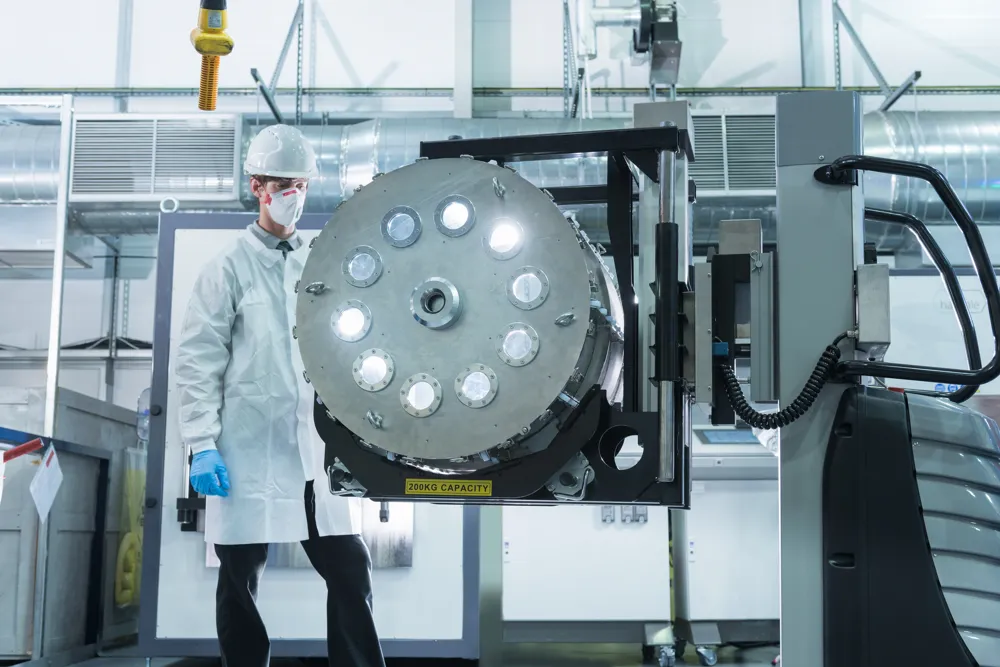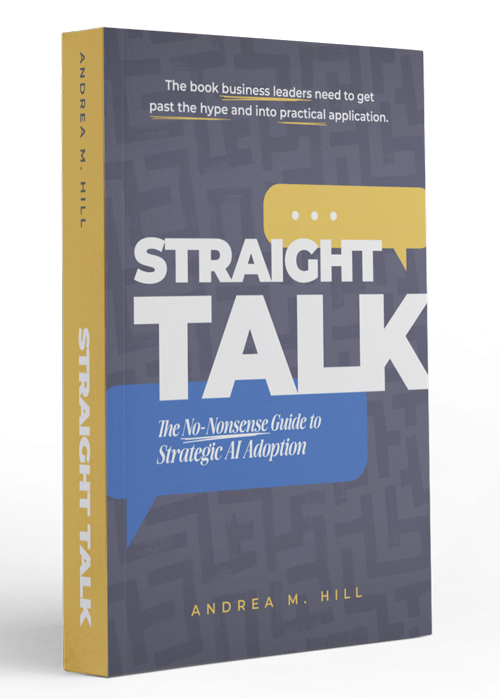Embracing the Future: How AI Revolutionizes Manufacturing for Growth

Leveraging AI for Manufacturing Success
The market for AI applications in the manufacturing sector is set to grow astronomically in the coming years. Market research and consulting group Precedence Research predicts that AI manufacturing market size will double by 2025 and grow from $5.7 billion in 2022 to $63 billion in 2023. These predictions reflect the enormous potential of AI for manufacturing.
While most of the talk about business applications of AI have been in the realm of generative AI (that is, text and image generators), the real power of these technologies lies in areas like inventory management and manufacturing. From process optimization to predictive maintenance, AI is poised to transform manufacturing in the next decade.
What Is AI?
It might be easier to begin by stating what AI is not: it is not Skynet from the Terminator films, and it is not Hal 9000 from 2001: A Space Odyssey. It is not intelligent in the way people are; it does not have a will of its own. It doesn’t now, and it probably won’t ever.
The basis of the type of AI that exists in reality involves machine learning. To quote our book on AI implementation, Beyond Profit: Responsible Adoption of AI for Business Growth, machine learning consists of show[ing] a computer program lots of examples of something—let’s say pictures, including pictures of dogs and names of dog breeds—and [telling] the program which pictures are dogs and which ones are not. Just as a dog may make mistakes at first when learning a new trick, the computer will also make mistakes when learning to recognize dogs. But over time, using more examples and consistent feedback, the computer gets better at recognizing dogs, until it recognizes dogs correctly every time. And that’s all that machine learning is—teaching a computer program to learn by showing it lots of examples and giving it lots of feedback.
Machine learning algorithms not only work with vast quantities of data, they also work extraordinarily fast, achieving in hours or days what might take a human analyst months or even years to sort through. This example should illustrate that we’re a long ways away from machines that think and act autonomously, if such a feat is even actually achievable. Nevertheless, machine learning is remarkable as it is, and the above example should already have you imagining the potential of AI for manufacturing.
Quality Control
Take the quote above and switch out dog breeds for machined parts like, say, aluminum expansion slots for a computer case. By analyzing thousands of examples, an AI model can “learn” to identify what a well-made expansion slot looks like and determine which ones coming off of the line are bent, cracked, scratched, or otherwise flawed. AI can do this much faster than human inspectors can. The program can then flag them for further inspection by a human inspector.
Predictive Maintenance
The best medicine is preemptive: taking care of yourself before a problem arises. The same goes for manufacturing equipment. Waiting until something breaks is much more expensive than taking preemptive action.
The same method used to train an AI to assist in quality control is used in AI-powered predictive maintenance. Predictive maintenance combines real-time monitoring with analysis of historical cases. As these case studies show, machine learning algorithms and artificial intelligence are already helping manufacturing companies predict equipment and electrical failures before they happen by comparing historical examples to the current status of a particular machine, part, or resource. Plant engineers can then use this information to make repairs or prepare for maintenance shutdowns in ways that don’t disrupt production.
Process Optimization
Efficient, thoughtful processes are where businesses succeed. Businesses put a great deal of effort into refining their processes because optimal processes allow employees to focus on doing their jobs rather than figuring out (or just remembering) how to complete each step of their job. This is one way in which UK-based startup DAFO is working to develop AI for manufacturing.
In this short video, DAFO co-founder Daniela Gonzales explains their Modular Operator Guidance Suite, an AI system designed for use in assembly plants. Using a form of AI called computer vision, the system helps the operator pick the correct component from the components on the table and then place the component in the correct position. The system will then let the operator know if they’ve completed the task correctly. It’s a great example of AI not replacing a worker but helping a human laborer focus on the task itself rather than on the steps of the task, enabling workers to work more efficiently with fewer errors.
Supply Chain Management
The events of the past few years have highlighted the need for a more robust, efficient, and flexible supply chain. Many large companies like Amazon and Walmart have been using AI to manage their supply chains for years, but this technology isn’t just for the biggest businesses anymore. Modern supply chains are vast and complex, and AI can help identify trends that human analysts might miss, such as shifts in consumer demand or raw material availability. AI trained on the right data can also optimize delivery routes and times and suggest the best ways to use available truck capacity, according to a recent Smart Industry case study of a large shipping carrier. The case study highlights the benefits of AI-supported supply chain management for manufacturers, including “significant increase in first-tender acceptance” and “a significant decrease in total transportation cost.”
Integrating AI into Your Business
The initial wave of hype surrounding text and image generators is dying down and businesses begin to realize the true strengths of AI lie elsewhere. Despite AI’s potential, the manufacturing sector has been slow to adopt these new technologies. A measured approach is a smart move given the amount of marketing hype surrounding these technologies, but you also don’t want to miss out on something that can give you a competitive advantage.
Before adopting any new AI-powered systems, know what you want to get out of them. Like any other tool, just having it around isn’t going to solve problems. You have to first identify where your current processes are failing and understand exactly how AI-powered tools can help improve them.
Also note that replacing a human workforce is not the ultimate goal of manufacturing automation. People live and interact in a physical world of the senses. We understand context, history, relationships, emotion, and how both employees and customers actually operate, all in a way machines just cannot. AI can augment the work of human safety inspectors, customer service agents, and QA specialists, but until we can get self-driving cars to stop mowing down pedestrians, it might not be a good idea to put people’s lives in the hands of AI or to believe that AI is a magic word that will solve all of our problems. Like any other tool, AI will only ever be as good as the human beings in control of it.
Andrea Hill's
Latest Book
Straight Talk
The No-Nonsense Guide to Strategic AI Adoption

Where other books focus on prompts and tools, this book gives business leaders what they actually need: the frameworks and confidence to lead AI adoption responsibly, without having to become technologists themselves.
Also available at independent booksellers and public libraries.
Are You Ready to Do Better Growth Management?
StrategyWerx is all about growth strategy and management. That means giving you the tools you need to develop sound strategies, structure your organization to lay the track ahead of the train, and implement the tools you need to grow. Ready to learn more about how we do that? Book a free consult and bring your questions. See if you like working with us on our dime, and get some good advice in the process.